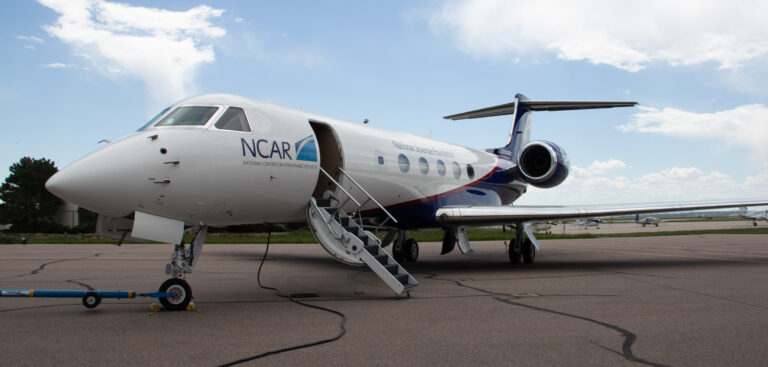This August, the National Center for Atmospheric Research (NCAR) and NASA will use two research aircraft to study how the Asian summer monsoon affects atmospheric chemistry and global climate.
Supported by the US National Science Foundation (NSF), the Asian Summer Monsoon Chemical and CLimate Impact Project (ACCLIP) will be co-led by NCAR and NASA and supported by an international team of scientists based out of the Osan US Air Base in South Korea.
While the monsoon is most often associated with the deluge of moisture it brings down on the Asian continent, the ACCLIP research team will be focused on what the powerful circulation of the monsoon pulls back up.
Since the monsoon occurs over some of the regions with the worst air quality in the world, scientists think a wide range of pollutants may get sucked high into the atmosphere. The resulting redistribution of chemicals, and their reactions with one another, can have a significant impact on the climate.
Laura Pan, NCAR scientist and ACCLIP principal investigator, said, “In recent decades, satellites have revealed that the monsoon creates a distinct layer of chemicals about 10 miles above the Earth, but we know very little about its composition and evolution. ACCLIP will give us an opportunity to sample what’s there, but we know that whatever its composition, it connects to the climate.”
Impacts on climate, ozone
ACCLIP’s scientific objectives include improving understanding of how the Asian summer monsoon transports air from the ground to the top of the troposphere and bottom of the stratosphere miles above Earth’s surface, as well as which chemicals are contained in that air.
The researchers also want to understand how those chemicals react once they are lofted up. For example, some chemical species can transform into aerosols, or tiny particles, once they reach the upper troposphere and lower stratosphere. These aerosols can reflect the sun’s light back into space, cooling the Earth. Other aerosols, known as ‘black carbon’, originate from combustion at the surface, and these aerosols will absorb the sun’s radiation and produce a heating effect. Aerosols, as well as water vapor that is also sucked up by the monsoon, can affect cloud formation and brightness, which also affects the climate. The monsoon may also redistribute relatively short-lived greenhouse gases, such as methane, and ozone-depleting substances, such as chlorinated solvents.
Finally, ACCLIP researchers are interested in studying how the pollutants pulled up by the monsoon may affect ozone chemistry in the region of the atmosphere where the protective ozone layer forms.
To answer these questions, the ACCLIP team will use two research aircraft outfitted with several scientific instruments. The NSF/NCAR Gulfstream V will fly at a lower altitude, where it can sample the air as it’s being circulated by the monsoon; the NASA WB-57 will fly higher, where it can observe the layer of chemicals that make it into the lower stratosphere from the monsoon.
The research team will also use a group of detailed computer models of chemical transport to guide their flights and test their hypotheses. The results from ACCLIP will ultimately be used to improve these complex models.
Globally, more than 30 institutions are involved in the month-long project, with researchers having worked for more than a decade to get a field campaign focused on the Asian summer monsoon up and running. NCAR project managers and engineers are handling the logistics related to the GV and the instruments on board.
“For many years, there has been a huge amount of interest in a field campaign to study the Asian summer monsoon because it’s such an important driver of the weather and climate in the northern hemisphere and beyond,” Pan said. “We are thrilled to finally be on our way and grateful to all our institutional partners who have contributed their instruments and expertise to make ACCLIP a success.”



